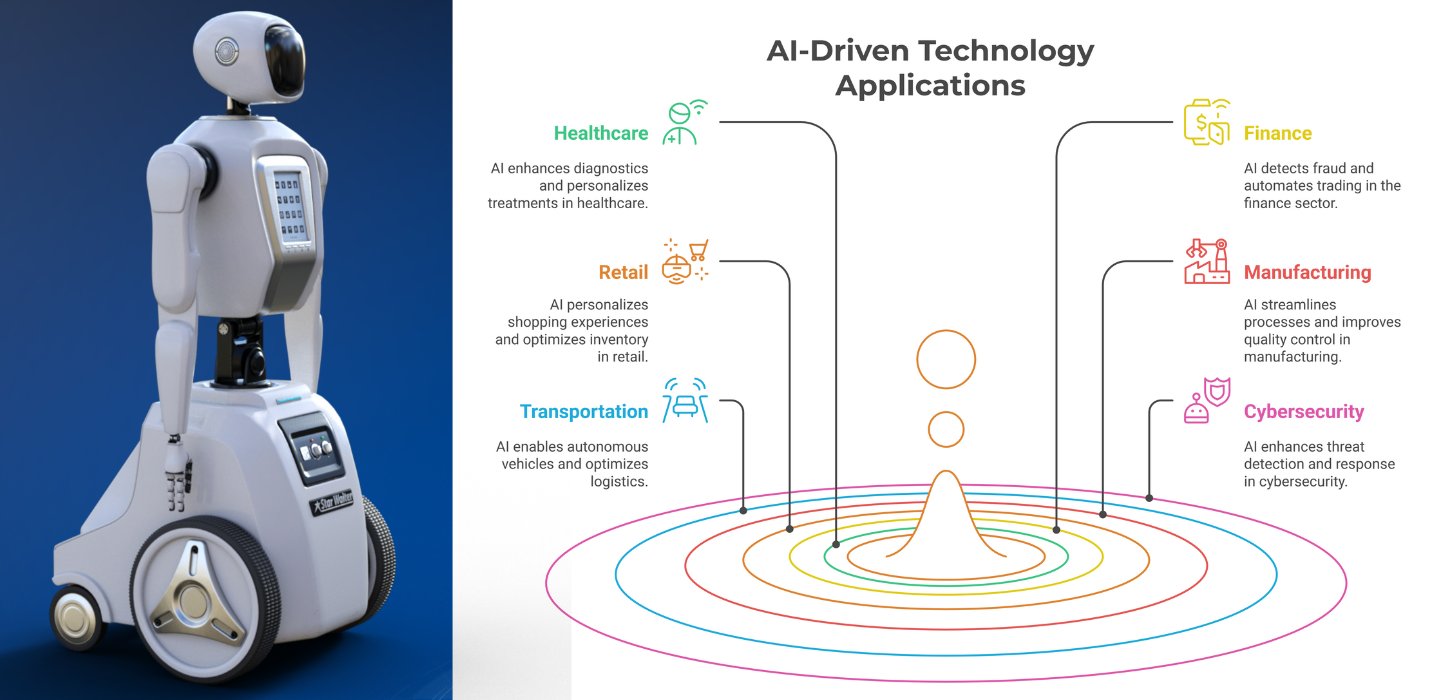Table Of Contents

How It Works and Why It Is Transforming Industries
AI-driven technology is no longer a futuristic concept. It is already shaping industries by automating tasks, improving efficiency, and making data-driven decisions at a scale that was impossible before. From self-driving cars and voice assistants to predictive analytics and fraud detection, AI is changing how businesses operate. The key to understanding AI’s impact lies in knowing how it processes data, learns from patterns, and continuously improves decision-making.
How AI-Driven Technology Works
AI is not a single system but a collection of technologies that work together to process vast amounts of data, recognize patterns, and make intelligent decisions. The core of AI-driven technology is built on machine learning, deep learning, and neural networks. These models are trained on large datasets and use algorithms to extract insights. Unlike traditional software, which follows predefined rules, AI continuously learns from new data and adapts its responses.
Data Processing and Learning
AI models require high-quality data to function effectively. They process structured and unstructured data from various sources, including text, images, audio, and numerical data. The learning process is categorized into:
- Supervised Learning AI is trained on labeled datasets where input-output relationships are already known. It is used in fraud detection, speech recognition, and recommendation systems.
- Unsupervised Learning AI identifies hidden patterns and relationships in unlabeled data. It is widely used in customer segmentation, anomaly detection, and market analysis.
- Reinforcement Learning AI learns by interacting with an environment, receiving rewards or penalties based on its actions. It powers autonomous systems like self-driving cars and robotics.
Why AI-Driven Technology Is So Powerful
The reason AI-driven technology is transforming industries is its ability to analyze massive amounts of data, detect patterns, and make real-time decisions. Unlike traditional automation, AI can handle complex, unstructured problems where predefined rules do not work. It also improves over time by continuously learning from new information.
AI in Industry Applications
AI is applied across different industries, making systems more efficient, scalable, and intelligent.
- Healthcare AI detects diseases from medical images, predicts patient outcomes, and assists in drug discovery.
- Finance AI models analyze transactions to detect fraud, automate trading strategies, and optimize risk management.
- Retail AI personalizes shopping experiences through recommendation engines, demand forecasting, and automated inventory management.
- Manufacturing AI-powered robotics enhance production efficiency, predictive maintenance prevents equipment failure, and quality control improves product consistency.
- Marketing and Customer Service AI chatbots and virtual assistants handle customer interactions, AI-driven content generation enhances engagement, and sentiment analysis helps businesses understand customer opinions.
Challenges and Ethical Considerations in AI
Despite its potential, AI-driven technology comes with challenges that need to be addressed.
- Bias in AI Models If training data is biased, AI can make unfair or inaccurate predictions. Engineers mitigate this by improving dataset diversity and using fairness algorithms.
- Explainability and Transparency Many AI models, especially deep learning, function as black boxes, making it difficult to understand how they arrive at decisions. Explainable AI (XAI) techniques help make models more interpretable.
- Data Privacy and Security AI processes vast amounts of sensitive data, raising concerns about privacy and ethical usage. Regulations like GDPR and AI governance frameworks ensure responsible AI implementation.
The Future of AI-Driven Technology
AI is rapidly advancing with breakthroughs in self-supervised learning, generative AI, and multimodal AI systems that process multiple data types simultaneously. The integration of AI with blockchain, quantum computing, and edge computing is set to unlock even greater potential. Organizations that leverage AI-driven technology effectively will remain ahead in innovation, efficiency, and competitive advantage. The challenge is not whether AI will be part of the future, it is how it will be used responsibly and effectively to solve real-world problems.











